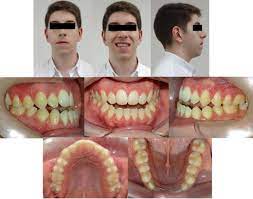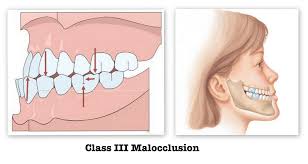Class III Malocclusion (Under-bite), commonly referred to as an “under-bite,” is a type of dental misalignment characterized by the lower front teeth protruding beyond the upper front teeth when the jaw is closed. This condition can have various causes, including genetic factors, abnormal jaw growth, or a combination of both. Class III Malocclusion (Under-bite) may be associated with maxillary growth deficiency (and/or maxillary retrognathia), mandibular growth excess (and/or mandibular prognathism), or a combination of both along with vertical and transverse malformations.
A recent systematic review reported a global prevalence of Angle Class III Malocclusion (Under-bite) within the interval of 0%–26.7% for different populations. Prevalence rates of 15.80%, 15.69%, and 16.59% were revealed for Southeast Asian countries, Chinese, and Malaysian groups, respectively.
Individuals with Class III Malocclusion (Under-bite) may experience challenges in chewing, speaking, and maintaining proper oral hygiene due to the misalignment of their teeth and jaws. Along with that, Class III patients experience problems with their esthetic appearance due to a concave profile and vertical functional pattern that limits the function to vertical movements.
Orthodontists employ various treatment modalities, such as fixed braces, removable orthodontic appliances, and occasionally surgical intervention, to correct Class III Malocclusion (Under-bite). The goal is to achieve proper alignment of the teeth and jaws to improve both function and aesthetics. In some cases, early orthodontic treatment during childhood or adolescence can help guide the growth of the jaws and prevent more severe Class III Malocclusion (Under-bite) from developing.
Etiology and Diagnosis
The development of Class III Malocclusion (Under-bite) results from a myriad of factors, primarily rooted in genetic heredity. Extensive research has shown that hereditary influences play a significant role in the manifestation of Class III Malocclusion (Under-bite). Familial inheritance patterns, such as the well-documented “Habsburg Jaw” in European royalty, underscore the genetic underpinnings of mandibular prognathism. However, it is crucial to recognize that genetics alone do not tell the entire story. Environmental factors also contribute significantly to this condition.
Wrong postural habits of the mandible can pathologically alter the positioning of the mandibular condyle, leading to a forward spatial shift of the mandible. Additional factors include atypical swallowing patterns, nasal airway obstructions, mouth breathing, functional mandibular shifts due to respiratory needs, hormonal imbalances (e.g., gigantism or pituitary adenomas), trauma, and premature loss of primary teeth, congenital defects like cleft lip or cleft palate, and muscle dysfunction, alone or in combination with other environmental factors. The precise interaction between these genetic and environmental elements remains a topic of ongoing research and debate.
Clinical Features
Class III Malocclusion (Under-bite) presents a distinct set of clinical features that orthodontists must keenly observe for accurate diagnosis. Among the primary clinical indicators are anterior cross-bites, where the lower front teeth protrude beyond the upper front teeth, resulting in an under-bite appearance. Patients often experience difficulties in chewing and speaking due to the misalignment of their teeth and jaws. In addition to functional challenges, Class III Malocclusion (Under-bite) can have a significant impact on facial aesthetics, affecting a patient’s self-esteem and overall quality of life.
Types of Class III Malocclusion (Under-bite)
Class III Malocclusion (Under-bite) can be manifested in various forms, with differing degrees of severity. It can be categorized into three primary types:
– Skeletal Class III Malocclusion (Under-bite)

This type primarily involves skeletal discrepancies between the upper and lower jaws, characterized by either a deficient maxilla, protruded mandible, or both. Genetic factors often play a predominant role in skeletal Class III Malocclusion (Under-bite).
– Dental Class III Malocclusion (Under-bite)

In this form, the discrepancy between the upper and lower teeth is primarily dental, with relatively normal jaw alignment. Dental Class III Malocclusion (Under-bite) may result from factors such as tooth size discrepancies or dental arch crowding.
– Functional Class III Malocclusion (Under-bite)
This type is characterized by a discrepancy in the way the upper and lower jaws function during biting and chewing, while falling into a skeletal Class I malocclusion category. It may result from muscular imbalances or incorrect functional habits.
When treating a patient with Class III Malocclusion (Under-bite), the orthodontic treatment plan would largely vary according to whether it’s a true skeletal or a functional/pseudo Class III Malocclusion (Under-bite). To differentiate between the two, proper clinical diagnosis is essential as both cases exhibit an anterior cross-bite. This can be done by guiding the patient into centric relations. If incisors have an edge-to-edge relationship with a posterior open bite, and a forward mandibular shift must occur for posterior teeth to occlude in centric occlusion, then this indicates the presence of a pseudo-class III. Radiographic analysis, a necessary adjunct to clinical diagnosis, of such a case would show a skeletal class I relationship with normal sizes of the maxilla and mandible.



